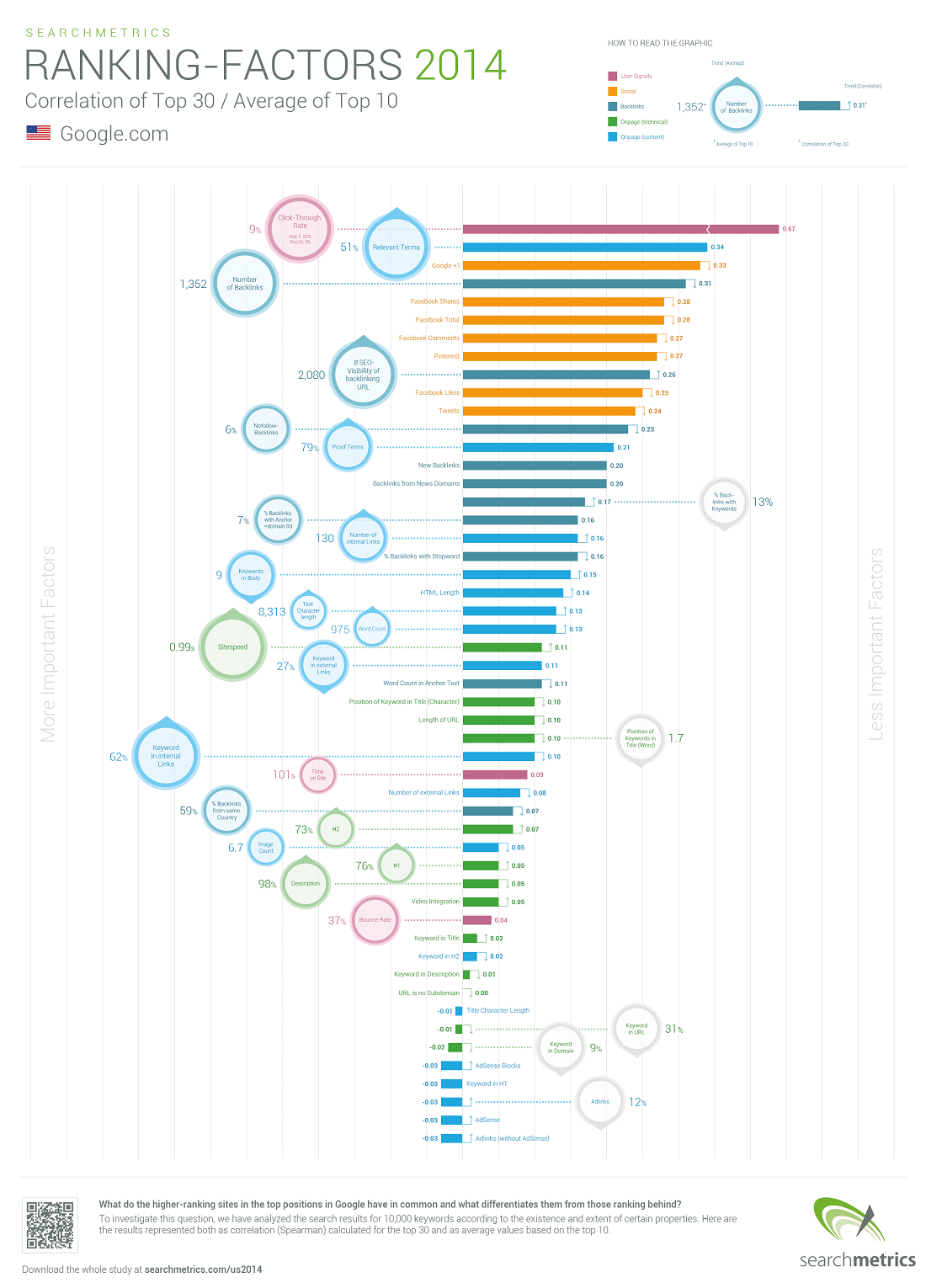Searchmetrics launched a new study titled SEO Rank Correlations and Ranking Factors 2014 − Google U.S. The report shows new insights into correlations between search factors and rankings that correspond with today’s algorithms. This gives search marketers a glimpse on changes for successful website optimization.
This new study about the search landscape is by far the largest Searchmetrics has done. This includes dozens of additional factors and in-depth analyses of search results for 10,000 keywords of high-ranking sites.
Let’s look at the key takeaways from the study to give you a fresh idea on how these factors might affect your search processes:
Site Architecture and Performance
The top 30 sites analyzed in the study share the following features when it comes to site architecture and performance:
- URL length − the shorter the URL, the better the rank.
- Keyword positioning − placing keywords in the title is more important than having them in the URL or domain name.
- H1, H2 integration − keywords must be present in the H1 tags.
- Meta description − the description of existing webpages must include keywords and must be relevant to the targeted page.
- Use of videos − adding videos makes content more interesting for visitors.
Quality Content
Relevant, quality content remains at the top of the ranking factors for SEO. Today’s content is shifting to topic-based, longer posts than singular keyword-focused articles. The study shows that sites with more than 900 words in their copy have higher ranks, but these coincide with proper placement and use of relevant keywords. Comprehensive wording of relevant terms is important for the consistent use of Proof and Relevant keywords throughout the website copy. How you present your content is also a strong indicator for better ranking. For example, long body content should include images, videos, and other media to avoid blocks of text crowding your webpages.
Backlinks
As Google focuses on user experience, your backlinks must come from quality, trusted sources. The better the quality of your links, the more chances you have of ranking at the top of search results. While Google reinforces the need to have quality backlinks, the search engine giant also stresses that the amount of links you integrate is just as important. The anchor text must also look natural to improve results and to focus on the search experience as a whole.
Social Signals
This year’s study shows little changes on how social signals correlate with rankings. Despite such findings, Google still sees tweets, likes, and +1s as good ranking factors for websites. According to the report, social signals have risen slightly in this year’s ranking factor chart. In a nutshell, social signals direct to content, but you need well-written articles for the site to rank.
User/Traffic Signals
The bombshell in this year’s ranking factors is the rise of user/traffic signals. While content, social signals, and quality backlinks bring most of the results, user signals are also as important as these elements. The report shows the following factors as part of the correlation between rankings and user/traffic signals:
- Click-through-rate − how many unique visitors does the site have?
- Time-on-site − how much time do visitors spend browsing the site?
- Bounce rate − how many visitors leave the site without viewing other pages?
The study shows that high-ranking websites have higher click-through-rates and higher time-on-site visits, but lower bounce rates.
Moving Forward with Good Search Ranking
With this new study, search marketers can expect a complete turnaround for their strategies and processes. This only reinforces the mantra of “optimize your site for search experience, not for search engines”.
As your partner, we make sure our methodologies align with industry standards and reflect Google’s guidelines. Stay updated with our news to find out more about the latest changes in the search landscape.



